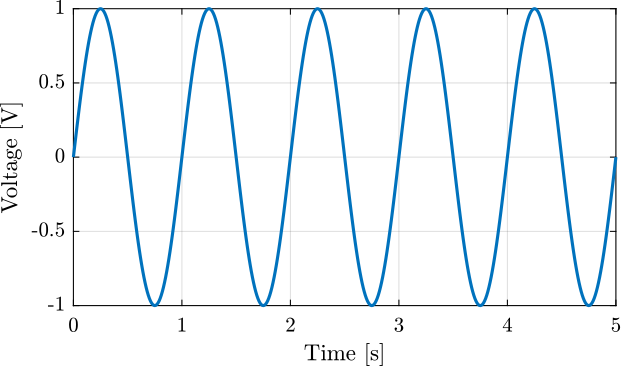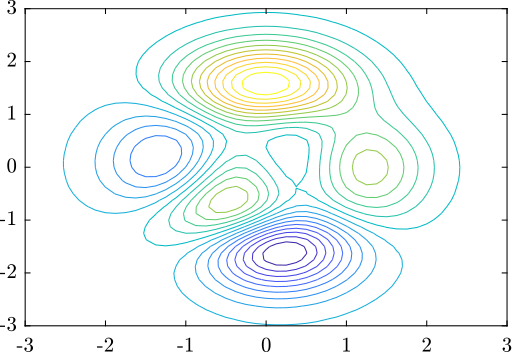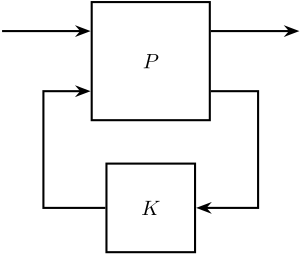15 KiB
Glossary and Acronyms - Tables
| label | name | description |
|---|---|---|
| ka | \ensuremath{k_a} | Actuator Stiffness in |
| phi | \ensuremath{ɸ} | A woody bush |
| key | abbreviation | full form |
|---|---|---|
| mimo | MIMO | Multiple-Inputs Multiple-Outputs |
| siso | SISO | Single-Input Single-Output |
| nass | NASS | Nano Active Stabilization System |
| lti | LTI | Linear Time Invariant |
Title Page
Abstract
Résumé
Acknowledgments
Table of Contents
Introduction
Test
minitoc
Abstract
Lorem Ipsum is simply dummy text of the printing and typesetting industry. Lorem Ipsum has been the industry's standard dummy text ever since the 1500s, when an unknown printer took a galley of type and scrambled it to make a type specimen book. It has survived not only five centuries, but also the leap into electronic typesetting, remaining essentially unchanged. It was popularised in the 1960s with the release of Letraset sheets containing Lorem Ipsum passages, and more recently with desktop publishing software like Aldus PageMaker including versions of Lorem Ipsum.
Test
A list:
- acronyms acrshort:nass acrshort:mimo acrshort:lti Single-Input Single-Output (SISO)
- glossary terms gls:ka, gls:phi.
- Bibliography citations: cite:&dehaeze21_activ_dampin_rotat_platf_using;&dehaeze21_mechat_approac_devel_nano_activ_stabil_system.
A definition list:
- this
- means that
- that
- means this
Some Footnote1
Section
Sub section
This is a sub section.
Sub section
Start of the sub section
Paragraph
This is a paragraph
lksdfjasd
lksdfjasd
blabla
Source Blocks
minitoc
Figures
Table Result
x = 1:10;
y = x.^2;| $x$ | $y = x^2$ |
|---|---|
| 1 | 1 |
| 2 | 4 |
| 3 | 9 |
| 4 | 16 |
| 5 | 25 |
| 6 | 36 |
| 7 | 49 |
| 8 | 64 |
| 9 | 81 |
| 10 | 100 |
Inline Results
Results can be automatically outputed as shown below.
sqrt(2)1.4142
yy =
1 4 9 16 25 36 49 64 81 100
Caption and Reference
Captions can be added to code blocks. Moreover, we can link to specific bode blocks (Listing lst:matlab_figure or lst:matlab_svd).
figure;
[X,Y,Z] = peaks;
contour(X,Y,Z,20)A = [1 2; 3 4; 5 6; 7 8]
[U,S,V] = svd(A)A = [1 2; 3 4; 5 6; 7 8]
A =
1 2
3 4
5 6
7 8
[U,S,V] = svd(A)
U =
-0.152483233310201 -0.82264747222566 -0.394501022283829 -0.379959133877596
-0.349918371807964 -0.42137528768458 0.242796545704357 0.800655879510063
-0.547353510305727 -0.0201031031435029 0.697909975442776 -0.461434357387336
-0.74478864880349 0.381169081397575 -0.546205498863303 0.0407376117548695
S =
14.2690954992615 0
0 0.626828232417541
0 0
0 0
V =
-0.641423027995072 0.767187395072177
-0.767187395072177 -0.641423027995072
Source Blocks with Line Numbers
Citation cite:&taghirad13_paral;&dehaeze21_activ_dampin_rotat_platf_using
The Listing lst:matlab_line_numbers has line numbers as the -n option was used.
Specific lines of codes can be referenced. For instance, the code used to specify the wanted the vertical label is on line (test).
figure;
plot(t, x)
xlabel('Time [s]');
ylabel('Output [V]'); (ref:test)
Numbering can be continued by using +n option as shown below.
figure;
plot(t, u)
xlabel('Time [s]');
ylabel('Input [V]');Images
minitoc
Normal Image
Figure fig:general_control_names shows the results of the Tikz code of listing lst:tikz_test.
\begin{tikzpicture}
% Blocs
\node[block={2.0cm}{2.0cm}] (P) {$P$};
\node[block={1.5cm}{1.5cm}, below=0.7 of P] (K) {$K$};
% Input and outputs coordinates
\coordinate[] (inputw) at ($(P.south west)!0.75!(P.north west)$);
\coordinate[] (inputu) at ($(P.south west)!0.25!(P.north west)$);
\coordinate[] (outputz) at ($(P.south east)!0.75!(P.north east)$);
\coordinate[] (outputv) at ($(P.south east)!0.25!(P.north east)$);
% Connections and labels
\draw[<-] (inputw) -- ++(-1.5, 0);
\draw[<-] (inputu) -- ++(-0.8, 0) |- (K.west);
\draw[->] (outputz) -- ++(1.5, 0);
\draw[->] (outputv) -- ++(0.8, 0) |- (K.east);
\end{tikzpicture}Sub Images
Link to subfigure fig:general_control_names_1.
| file:figs/general_control_names.png | file:figs/general_control_names.png |
| <<fig:general_control_names_1>> sub figure caption | <<fig:general_control_names_2>> sub figure caption |
Tables
minitoc
Table tab:table_with_equations shows a table with some mathematics inside.
| $N$ | $N^2$ | $N^3$ | $N^4$ | $\sqrt n$ | $\sqrt[4]N$ |
|---|---|---|---|---|---|
| 1 | 1 | 1 | 1 | 1 | 1 |
| 2 | 4 | 8 | 16 | 1.4142136 | 1.1892071 |
| 3 | 9 | 27 | 81 | 1.7320508 | 1.3160740 |
| 1 | 2 | 3 | 4 | 5 | |
| 1 | 1 | 2 | 3 | 4 | 5 |
| 2 | 2 | 4 | 6 | 8 | 10 |
| 3 | 3 | 6 | 9 | 12 | 15 |
| 4 | 4 | 8 | 12 | 16 | 20 |
| 5 | 5 | 10 | 15 | 20 | 25 |
| Classical Control | Modern Control | |
|---|---|---|
| Date | 1930- | 1960- |
| Tools | Transfer Functions | State Space formulation |
| Nyquist Plots | Riccati Equations | |
| Bode Plots | ||
| Phase and Gain margins | ||
| Control Architectures | Proportional, Integral, Derivative | Full State Feedback |
| Leads, Lags | LQR, LQG | |
| Kalman Filters | ||
| Advantages | Study Stability | Automatic Synthesis |
| Simple | MIMO | |
| Natural | Optimization Problem | |
| Disadvantages | Manual Method | No Guaranteed Robustness |
| Only SISO | Difficult Rejection of Perturbations |
Appendix
Mathematical formulas
Comments on something
Bibliography
List of Publications
Glossary
Footnotes
1this is a footnote with citation cite:&dehaeze21_mechat_approac_devel_nano_activ_stabil_system.


